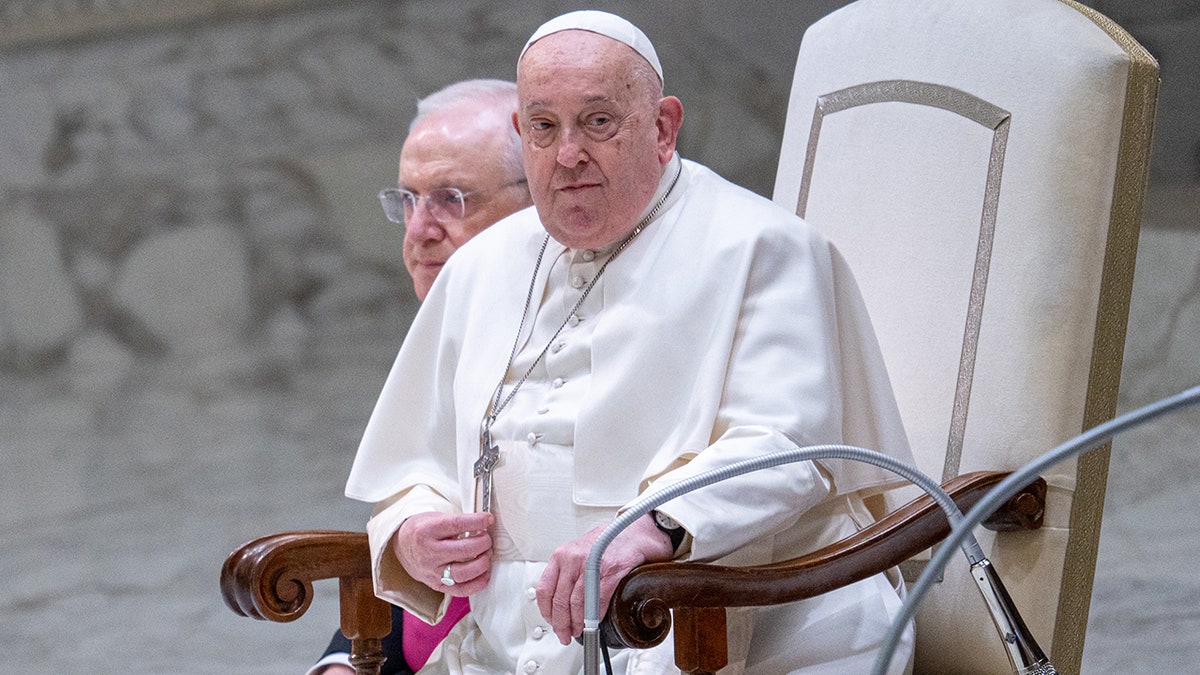
Pope Francis’s Health: Mechanical Ventilation Resumed Amidst Stable Condition
Pope Francis’s health remains a subject of intense scrutiny and prayer as he continues to receive treatment at Rome’s Gemelli Hospital. The Vatican has issued regular updates regarding his condition, providing glimpses into the Pontiff’s progress and ongoing medical care. Despite a complex medical situation involving a respiratory infection and pneumonia, the latest reports indicate a degree of stability, although his prognosis remains guarded.
On Tuesday, the Vatican announced that Pope Francis would resume non-invasive mechanical ventilation, a procedure intended to support his respiratory function. This decision was made despite the fact that his condition was described as stable, without episodes of respiratory insufficiency or bronchospasm. The Pope also remains without fever, alert, cooperative with therapies, and oriented, indicating a level of cognitive function and engagement with his treatment.
Earlier in the day, Pope Francis had transitioned to high-flow oxygen therapy and engaged in respiratory physiotherapy, a treatment designed to improve lung capacity and breathing efficiency. The decision to resume mechanical ventilation, scheduled for Tuesday evening until Wednesday morning, suggests a proactive approach to managing his respiratory health and preventing potential complications.
The Vatican’s statement emphasizes that this course of action was planned, suggesting a carefully considered medical strategy rather than a response to a sudden deterioration. This detail aims to reassure the public that the Pope’s medical team is closely monitoring his condition and implementing interventions as deemed necessary.
The Pope’s daily routine includes periods of prayer and rest. The Vatican also noted that Pope Francis received the Eucharist on Tuesday morning, highlighting the spiritual dimension of his recovery and his continued connection to the Church’s sacraments.
However, sources within the Vatican have cautioned against premature optimism. They described the Pope’s outlook as complex, emphasizing that he is not yet out of danger. This sober assessment underscores the seriousness of his condition and the potential for unforeseen challenges. One telling detail is that Pope Francis was reportedly too ill to appear in a video released earlier on Tuesday, a video that would normally feature the Pope speaking.
Pope Francis was admitted to Gemelli Hospital on February 14th. Initially, doctors diagnosed a complex respiratory tract infection encompassing viral, bacterial, and fungal elements. Subsequently, he developed pneumonia in both lungs, further complicating his condition.
Earlier reports indicated that Pope Francis suffered two acute respiratory crises on Monday. While described as a complex medical situation, these episodes were considered less dangerous than the bronchospasm he experienced on Friday. This information suggests that his medical team is actively managing various respiratory challenges and adjusting treatment strategies as needed.
Sources have also addressed the sensitive topic of end-of-life decisions, stating that it is premature to consider whether Pope Francis has a Do Not Resuscitate (DNR) order. This clarification aims to dispel speculation and emphasize the ongoing efforts to provide him with the best possible care.
Throughout this challenging period, Pope Francis has expressed gratitude for the outpouring of prayers and support from the faithful around the world. In a message posted on his X account (formerly Twitter) on Sunday, he wrote, "I would like to thank you for your prayers, which rise up to the Lord from the hearts of so many faithful from many parts of the world." He added, "I feel all your affection and closeness and, at this particular time, I feel as if I am ‘carried’ and supported by all God’s people."
These words reflect the deep connection Pope Francis has with his global flock and his reliance on their spiritual support during this time of illness. The message also conveys a sense of humility and vulnerability, acknowledging his dependence on the prayers and affection of others.
The ongoing situation surrounding Pope Francis’s health highlights the challenges of providing medical care to an elderly patient with complex health issues. The combination of a respiratory infection, pneumonia, and previous health conditions requires a multifaceted approach, involving careful monitoring, targeted interventions, and a proactive strategy to prevent complications.
The Vatican’s consistent communication with the public provides transparency and allows the faithful to stay informed about the Pope’s condition. While the information shared is carefully worded and avoids overly specific medical details, it offers a glimpse into the ongoing efforts to support his health and well-being.
The use of non-invasive mechanical ventilation is a common technique in respiratory care, providing support to the lungs without requiring intubation. This method can help improve oxygen levels and reduce the work of breathing, allowing the patient to rest and recover. High-flow oxygen therapy is another non-invasive approach, delivering a higher concentration of oxygen than traditional methods. Respiratory physiotherapy plays a crucial role in clearing secretions, improving lung capacity, and promoting effective breathing patterns.
The phrase "prognosis remains guarded" is a standard medical term that indicates uncertainty about the future outcome of a patient’s condition. In Pope Francis’s case, it reflects the complexity of his medical situation and the potential for unforeseen complications. While the latest reports suggest stability, it is important to acknowledge that his health remains a concern and that ongoing monitoring and treatment are essential.
The global community continues to pray for Pope Francis’s health, hoping for his full recovery and continued leadership of the Catholic Church. The prayers and well wishes from people of all faiths demonstrate the widespread respect and affection he has earned throughout his papacy. The coming days and weeks will be crucial in determining the trajectory of his recovery, and the world remains united in its hope for his well-being.
